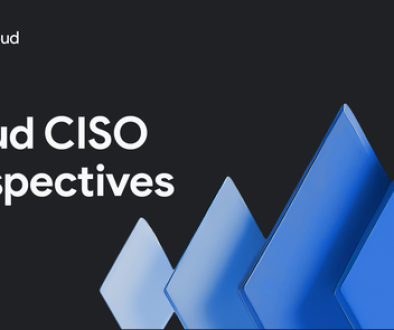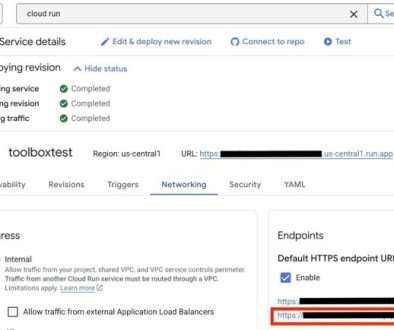GCP – Enabling global scientific discovery and innovation on Google Cloud
From unraveling the mysteries of our planet and the universe, to accelerating medical research and industrial innovation, scientific discovery impacts nearly every facet of human life. Today, scientific progress depends on the interplay of theory, experimentation, and computation, and increasingly, the most important and challenging problems require high-performance computing (HPC) and other advanced computing technologies and techniques.
In recent years, artificial intelligence (AI) has emerged as a powerful tool for information assessment and generation, while also becoming a powerful tool for scientific discovery, business innovation, and productivity. More recently, advances in quantum computing are increasing our confidence in shortening the timelines to solving problems beyond the reach of classical computers. Quantum computers under development now will lead to larger production systems that will catalyze the creation of new drugs and materials, reduce costs and risks in complex financial and logistics scenarios, and enable the development of more capable AI models.
At Google, our vision is to be the most comprehensive, capable, and accessible platform for science. Since 2008, Google Cloud has powered scientific discoveries, providing computational and data storage capabilities — including HPC clusters — to scientists, engineers, and developers worldwide. And this week, to enable continued revolutionary new science, we are bringing the best of Google DeepMind and Google Research together with new infrastructure and AI capabilities in Google Cloud, providing researchers with highly capable, cloud-scale tools for scientific computing. These new capabilities include:
-
Supercomputing-class infrastructure for scientific computing: Researchers can now deploy and use supercomputing clusters powered by the latest H4D VMs powered by AMD CPUs, and A4/A4X VMs powered by the latest NVIDIA GPUs. These VMs have new low-latency networking that provides supercomputer-like scaling and performance. We’re also announcing Google Cloud Managed Lustre for high performance storage I/O. These resources will enable scientists to tackle large-scale, complex science problems.
-
Advanced scientific applications powered by AI models for weather forecasting and biology: We’re now offering our first AI-powered science applications for the broader science community: AlphaFold 3 for predicting the structure and interactions of biomolecules, and WeatherNext models for weather forecasting.
-
AI agents for quicker ideas and faster discovery: Two new AI agents in Google Agentspace – Deep Research and Idea Generation – can help prepare comprehensive research reports and rapidly generate new scientific hypotheses.
Let’s take a look at these new capabilities in more detail.
- aside_block
- <ListValue: [StructValue([(‘title’, ‘Try Google Cloud for free’), (‘body’, <wagtail.rich_text.RichText object at 0x3e318d9f9d30>), (‘btn_text’, ‘Get started for free’), (‘href’, ‘https://console.cloud.google.com/freetrial?redirectPath=/welcome’), (‘image’, None)])]>
Supercomputing-class infrastructure and tools for science
Supercomputers are designed to achieve maximum performance on very large problems, as well as to train large AI models. With ongoing advances in science and AI, quick and easy access to supercomputing resources is critical.
Researchers can now deploy and use supercomputering-class HPC clusters in Google Cloud based on new H4D VMs (virtual machines), our most powerful CPU-based VMs that use 5th Generation AMD EPYCTM Processors. H4D clusters are connected with Remote Direct Memory Access (RDMA) networking utilizing Google’s Falcon and Titanium offload technologies, providing low-latency communications for HPC applications. By using standard message-passing libraries over RDMA, H4D VMs can efficiently scale applications up to tens of thousands of cores, resulting in faster time-to-solution. You can register for the H4D VM preview here.
Harvard University is using Google Cloud to advance heart disease research by simulating large-scale systems of red blood cells and other structures, including magnetically controlled artificial bacterial flagella (ABF), with the goal of developing therapies to attack and dissolve blood clots and circulating tumor cells in human vasculatures.
“With the power of Google’s new H4D-based clusters, we are poised to simulate systems approaching a trillion particles, unlocking unprecedented insights into circulatory functions and diseases. This leap in computational capability will dramatically accelerate our pursuit of breakthrough therapeutics, bringing us closer to effective precision therapies for blood vessel damage in heart disease.” – Petros Koumoutsakos, Harvard University
Professor Koumoutsakos’ research involves the simulation of blood flowing in a microfluidics device which is designed to capture circulating tumor cells.
HPC clusters based on our recently announced A4 and A4X VMs are also a critical component of our scientific discovery portfolio. A4 VMs, built on NVIDIA’s latest HGX B200 GPUs, are a versatile and powerful tool for multiple scientific computing applications, offering excellent performance for direct numerical simulation, and for AI training. A4X VMs, accelerated by NVIDIA GB200 NVL72 GPUs, are purpose-built for training and serving the most demanding, extra-large-scale AI workloads.
Clusters using these GPU-powered VMs can also unlock supercomputing-class performance for the next frontier of innovation: quantum computing. In the future, quantum computing systems will allow scientists to solve problems that are intractable even with the most powerful traditional supercomputers. In the meantime, HPC clusters based on A-series VMs can be used to design tomorrow’s quantum computers and optimize quantum algorithms, by simulating large quantum circuits using the quantum simulation solution blueprint.
For example, Google Research’s Quantum AI team leverages Google Cloud to simulate the intricate device physics of quantum hardware, develop sophisticated hybrid quantum-classical algorithms, and explore and test novel quantum algorithms. This robust simulation environment facilitates scientific breakthroughs by delivering the performance and scalability essential for demanding quantum research workflows.
“We observed excellent scalability simulating a 43-qubit circuit with a depth of 30 on Google Cloud’s new GPU-based supercomputers. These results underscore the potential for researchers to develop and test larger and deeper quantum circuits, which is important for understanding the performance of quantum algorithms and accelerating progress toward applications for today’s quantum computers.” – Sergio Boixo, Director, Computer Science, Google Quantum AI
HPC clusters demand high I/O performance to keep computational performance from stalling. Our new Google Cloud Managed Lustre storage service, developed in collaboration with DataDirect Networks and based on EXAScaler technology, provides the I/O performance needed for supercomputing-scale applications. Google Cloud Managed Lustre delivers a high-performance, fully-managed parallel file system optimized for HPC and AI applications. With petabyte-scale capacity and up to 1 TB/s throughput, Managed Lustre ensures researchers have the I/O performance they need to power their scientific discoveries. Request access to the Managed Lustre preview by contacting your account representative.
Advanced scientific applications powered by AI models
We recently announced our first AI-powered science applications for researchers and enterprises on Google Cloud: the groundbreaking AlphaFold 3 molecular structure and interaction prediction model, and the WeatherNext weather forecasting models.
AlphaFold 3, developed by Google DeepMind and Isomorphic Labs, is revolutionizing biology through its ability to predict the structure and interactions of all of life’s molecules with unprecedented accuracy. Understanding molecular structures and their interactions helps researchers better grasp complex interactions in human health and disease. AlphaFold 3 is now available for non-commercial use on Google Cloud.
“Having access to the scientific capabilities of AlphaFold on Google Cloud can help our research rapidly predict and explore the structure and interactions of all biomolecule classes. This change in capability will accelerate our understanding of diseases and enable the generation of therapeutic hypotheses.” – Sumaiya Iqbal, Senior group lead of the Ladders to Cures Accelerator, Broad Institute
To further support users, we’re simplifying access to AlphaFold 3 through a new high-throughput solution deployable via Cluster Toolkit. This turnkey solution enables efficient batch processing of hundreds to tens of thousands of sequences while minimizing costs by autoscaling infrastructure.
In the domain of weather, Google DeepMind and Google Research WeatherNext models use AI for fast and accurate weather forecasting, and we recently released live WeatherNext AI forecasts on BigQuery and Earth Engine. Today, we’re introducing access to WeatherNext AI models via Google Cloud’s Vertex AI Model Garden, enabling practitioners to customize and deploy these advanced models for energy prediction, logistics, agriculture, risk management, and more.
With easier and more affordable access to faster and more accurate weather forecasting models, researchers can study far more scenarios, and organizations can better prepare for weather events — such as heat waves, floods, and hurricanes — to reduce their impact on infrastructure, personnel, supply chains, and communities.
WeatherNext Graph forecasts visualized in Google Earth Engine, showing forecasted wind speed, wind direction, and precipitation as of September 8, 2023. The visualization demonstrates the projected path of Hurricane Lee over the Atlantic Ocean.
For instance, Carrier plans to leverage Google Cloud’s WeatherNext AI models as part of its Home Energy Management System (HEMS) to help enhance grid flexibility and enable smarter energy management. Once deployed, WeatherNext AI models are expected to help HEMS intelligently manage energy flows in real time — charging, discharging, and redirecting energy based on grid conditions, energy demands, and weather forecasts — contributing to a more balanced and sustainable energy grid.
Using AI as the ultimate research partner
Google’s robust ecosystem of information, productivity, and advanced AI tools has long helped drive scientific research, providing researchers with information and insight. Google Scholar is an indispensable resource for navigating the vast landscape of scientific literature and for discovering and tracking relevant publications. Then there’s Gemini, which can synthesize, summarize and explain information from highly scientific and technical content. And NotebookLM, an AI-powered research assistant, intelligently processes and summarizes selected research papers and datasets, dramatically accelerating literature reviews and extracting crucial information.
We’re excited to announce two new AI agents in Agentspace that have the potential to further accelerate scientific research and to revolutionize hypothesis generation. Deep Research condenses hours of research by synthesizing information across internal and external sources to generate in-depth research reports. Idea Generation helps rapidly develop novel ideas through AI agents that create ideas, then test them against each other to find the best hypotheses.
Scientists can also leverage AI Studio and Vertex AI on Google Cloud to develop customized AI applications and advanced machine learning workflows. We also recently announced Gemma 3, a collection of lightweight, state-of-the-art open models built from the same research and technology that powers our Gemini 2.0 models. These are our most advanced, portable and responsibly developed open models yet, and can be used to create scientific applications on local devices. Finally, Google Research’s Geospatial Reasoning framework, leveraging Vertex AI Agent Engine, will allow scientists and analysts to unlock powerful insights about the world through new geospatial foundation models and generative AI.
Enabling transformational science today and tomorrow
Together, these new advanced infrastructure, AI applications, and AI productivity technologies provide new cloud-scale scientific capabilities for all kinds of computational science research. Combined with our discovery, collaboration, and productivity tools, we are providing scientists and researchers with a comprehensive array of cloud-powered scientific capabilities.
Argonne National Laboratory, a leading laboratory for open science computational research, is working with Google Cloud to explore how advanced computing technologies and AI tools can empower scientists and engineers to make groundbreaking discoveries faster than ever. Through the collaboration, ANL will use and evaluate Google Cloud solutions for computational research, providing feedback and guidance to further advance the design, performance, and usefulness of Google Cloud for supercomputing-scale science.
“Having access to powerful computational capabilities is critical for making new scientific discoveries and accelerating innovations that power business and society. We are eager to work with Google Cloud to leverage their comprehensive, global-scale AI and HPC infrastructure, software technologies and AI-powered applications such as AlphaFold 3. Argonne National Laboratory’s collaboration with Google Cloud will effectively drive innovation and enable discoveries that change the world — and bring these capabilities to researchers everywhere.” – Rick Stevens, Associate Laboratory Director for Computing, Environment and Life Sciences, Argonne National Laboratory
Scientific discoveries are more important than ever for solving the world’s greatest challenges. At Google, we’re building powerful advanced computing technologies to enable scientific discoveries and innovations, and we are excited to bring all these capabilities together in Google Cloud.
Practitioners can get started today with credits, training, and more with Google Cloud for Researchers. To stay informed and learn more about Google Cloud can help advance scientific research and discovery, join the Google Cloud Advanced Computing Community.
Read More for the details.




